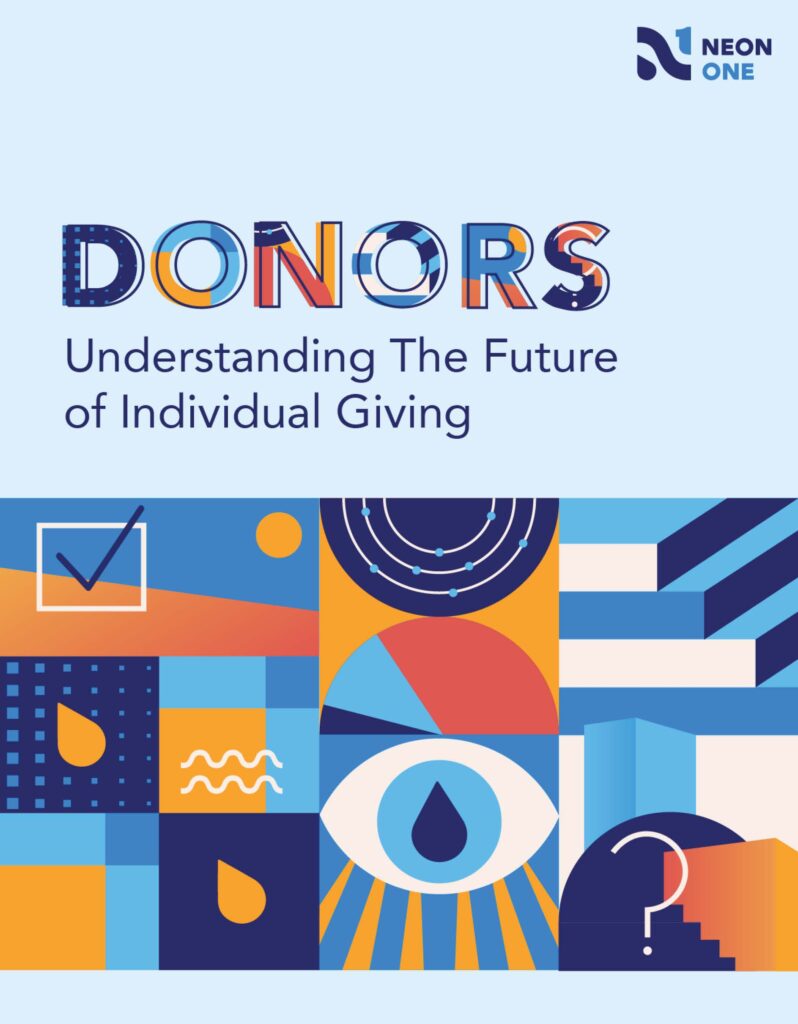What is this Report?
NeonOne set out to understand what individual giving looks like in the post-pandemic world. By reviewing many sources including academic journals, industry reports, blogs, and more, they have synthesized six questions:
- Who are our donors?
- What do our donors support?
- When do our donors give?
- Where are our donors?
- Why do our donors give?
- How do our donors give?
Due to the length of the report, Aspire will focus on the first three questions. The second part will be published in 2023.
What are key findings from the article?
- Typical demographics of a “generous donor” are: Affluent, college graduates, homeowners, people aged 55+. But priorities are different between generations. Older generations give to emergency relief but younger folks tend to give to children’s charities and animal-related causes.
- Black families gave the largest proportion of their wealth to charity. Studies also show that Latino households are more likely to have generational giving traditions. “The Vaid Group and Advancement Project for Democracy, one of the key findings was that “POC donors are much more likely to live in cross-class families and communities, where the impacts of the racialized wealth gap are very apparent. This fuels a fire towards upward class mobility and a desire for community uplift. Giving by these donors has unique features that emerge from the economic, historical ethnic, and racial experiences of each community, and other features that are shared across ethnicity and race.”
- There’s a correlation between giving and volunteerism. In a survey by Today’s Philanthropic Landscape, 53% of people who support a nonprofit subsequently volunteer there. 39% volunteer first, then give. Only 8% do neither!
- GivingTuesday’s Data Collaborative found that “75% of GivingTuesday are repeat donors, which far outpaces the industry average retention rate of 45%.” Even more striking, 84% of donors said that GivingTuesday made them want to give more in their communities.
- Donors support several charities annually, from five to seven. The report quotes Mark Phillips of Bluefrog Consulting who said, “They are not your donors; you are one of their charities.”
- Donor attrition is a real thing. Of first year donors, 80.8% are unlikely to give a second year. Asha Curran & Woodrow Rosenbaum at GivingTuesday ask in the report if part of the problem is the sector’s reliance on hard data instead of appealing to people’s emotions.
- Eleven-thirty a.m. on Thursday is the most likely day of the week that donors give online. And contrary to popular thought, December is not when the vast majority of giving is made. The report estimates that 17% – 22% of revenue from fundraising is in December.
What can I do as a result?
- Consider how your organization is engaging your donors, especially first-time donors. We all know that keeping a donor is a lot less expensive and less work than getting new ones. So how many first-time donors drop off at your organization? Lisa Greer, a donor mentioned in the report, said it best: “think like a donor. Remember how many emails they are likely sifting through each day, the volume of texts and calls flooding in. Consider how many companies are competing with you to earn their support. Bombarding your donors with fundraising requests will never be as effective as clearly communicated, professional two-way communication that demonstrates your appreciation and respect for them – along with your dedication, as an organization, to your mission.”
- Consider how your organization works with non-white donors and constituents. How are you treating them? How are you (or are you not) engaging them? Are you cultivating non-white donors? Asking them on your boards? Do your fundraising materials reflect the people in your constituency?
- Consider how encouraging first-time donors to volunteer can help further engage them for the future! And also look at your volunteers. They may be low hanging fruit, waiting to be engaged to donate to your cause.
Additional Resources
- Donors: Understanding The Future of Individual Giving l NeonOne 2022
- Inclusive Fundraising Raises Money – That’s Why Gender Matters! | Interview with Kathleen Loehr | Prospect Research #ChatBytes | 2019
- Donor Centered Fundraising l Penelope Burk
